The Royal International Air Tattoo 2023 Skytanker and the Italian 100th Anniversary
- Mike Lintott-Danks
- Aug 28, 2023
- 8 min read
This year’s Royal International Air Tattoo saw a mix of aircraft from cold war classics to the newest fighters in the shape of the Lockheed-Martin F-35 and SAAB Gripen E.
The major theme for this year’s RIAT was Skytanker, encompassing all aspects of air-to-air refueling with many different tanking aircraft on static display and some interesting flypasts showing the capabilities of the air refueling tankers.
The weather over the weekend was challenging for the flying display programme, with the organisers working hard to ensure that all the aircraft that were due to display, were able to perform around the high winds and heavy showers. On the Friday there were some spectacular displays in the low cloud and rain, especially the RAF Typhoon, which at times was just a pair of afterburning EJ200s disappearing into the gloom.

Skytanker
The first mid-air refueling, based on the development of Alexander P. de Seversky, between two planes occurred on 25 June 1923, between two Airco DH-4B biplanes of the United States Army Air Service.’ Wikipedia. 100 years later the Royal International Air Tattoo had an array of different modern tankers on display, to show how different forces utilise this important role to extend the range and loiter time of their aircraft.
Boeing C-135
One of the mainstays of air forces across the world for AAR for many years was the Boeing C-135 which was in manufacture from 1955-1965 with 803 being produced. There were two examples of the KC-135 in the static park one from the 100th ARW at RAF Mildenhall and the second was painted in a superb scheme, belonging to the civilian contracting company Metrea. The aircraft was originally a KC-135R flying with the Republic of Singapore Air Force until they retired their fleet and started to fly the Airbus A330 MRTT.
In the flying display was a C-135FR Armée de l'air et de l'espace from ERV04.031 "Sologne" based at Istres-Le Tubé (Base Aerienne 125) which completed multiple low flypasts on the Friday. This could be the last time that the C-135FR will be seen at RIAT due to its imminent retirement. Again being replaced by the Airbus A330 MRTT Phenix.
Airbus A330 MRTT
The Multi Role Tanker Transport (MRTT) is based on the A330 airliner and is utilised as a tanker and transport aircraft. The aircraft has seen success across 16 countries and with 68 having been ordered. The aircraft can perform both hose and drogue and boom AAR operations and this versatility allows it to support a wide variety of aircraft, both large and small. Aside from the AAR role the MRTT provides the user the ability to move large volumes of cargo and passengers. Along with the NATO MRTT the Royal Saudi Air Force had one of their aircraft present in the static display in support to the Saudi Hawk display team.
With the request of Finland and Sweden to join NATO, on the Saturday and Sunday an RAF Voyager performed a flypast with a Swedish Air Force (Flygvapnet) Gripen and then a Finnish Air Force (Ilmavoimat) F/A-18C showing the hose and drogue system in action.


Luftwaffe AAR demo
Originally a replacement for many of the partner nations for the versatile C-130 Hercules and C-160 Transall it is now in service with all the nations including Malaysia providing their transport needs. The Airbus A400M transport aircraft has multiple roles within the Luftwaffe and one of the additional ones that allows Germany to have an indigenous AAR capability. This will be bolstered by the purchase of Lockheed-Martin KC-130Js, that will be based at Évreux-Fauville Air Base in France.
An A400M from the Lufttransportgeschwader 62 from Wunstorf in north-western Germany completed a demonstration of its air-to-air refuelling capability whilst accompanied by a pair of Tornados from the Luftwaffe.
After the demonstration with the A400M the Tornados performed an aerial refuelling demonstration of buddy-buddy refuelling system, with the Tornado from TLG51 (based at Schleswig Air Base) carrying the refuelling pod. The other jet was from TLG 33 (based at Büchel Air Base).
Boeing KC-767
Originally designed as the replacement for the U.S Air Force KC-135 the KC-767 was cancelled due to corruption but Boeing continued development of the aircraft and Italy selected the KC-767A and signed a contract in 2002 becoming the launch customer, with delivery set for 2005 but due to an issue with flutter of the wing pods and other technical issues delivery was delayed until 2011. The Italian Air Force (Aeronautica Militare) ordered four aircraft. This version is based on the 767-200ER and is named the KC-767 Tanker Transport, and is fitted with boom and hose-drogue refuelling systems on the centreline with hose-drogue wing pod systems.
During the delay Boeing provided a 767 for training for the Aeronautica Militare. After resolving the issues, Boeing delivered the first KC-767 in January, and the second in March 2011. These aircraft officially entered service on 17 May 2011 with the 14º Stormo. After entering service, the two KC-767s supported NATO operations in Afghanistan and Libya. The final two tankers were delivered in late 2011.

Aeronautica Militare 100th anniversary
2023 saw the Aeronautica Militare celebrating their 100th anniversary. The main celebrations occurred in Italy with flypasts in March and an air show in June at Practica di Mare near Rome. The Aeronautica Militare filled the static park with a wide variety of types from the large KC-767 to the small four seat SIAI-Marchetti S-208A, which wore a celebratory scheme.


Polish Air Force SU-22M4
A classic from the cold war soviet era was on static display in the form of a Sukhoi SU-22M4, NATO named Fitter. The SU-17 first flew in 1966 and featured the variable sweep wing design. This aircraft became the Su-22 when it was exported and was utilised as a fighter-bomber.
Poland previously operated a fleet of 120 Su-22M4/UM3K Fitters together with a fleet of 27 earlier Su-20 Fitters whilst they formed part of the Soviet Union. Today, Poland continues to operate 12 Su-22M4 and 6 Su-22UM3K Fitters as a ground attack aircraft, the entire fleet is flown by the 40th Aviation Squadron based at Świdin. 2024 will see the end of the era in Europe for the Fitter with it being replaced by the Korean KAI FA-50.
SAAB 105
The SAAB 105 is a twin engine side-by-side seating trainer which began life as a private venture. The Swedish government eventually sponsored the production of a prototype in 1961. Developed as a low cost multirole aircraft, the SAAB 105 can be fitted with a variety of weapons or reconnaissance pods using six under-wing hardpoints. The SAAB 105 can easily be converted between combat and training configurations but can also be used to transport a pair of passengers via the installation of smaller ejector seats for the pilot/co-pilot and a bench behind them. The SAAB 105 was a limited success and was only ordered by Sweden and Austria with only 192 examples being produced.
Designated as the Sk.60 in Swedish Air Force service, the Swedish Government initially ordered 130 aircraft during 1963. In addition to the basic Sk.60A trainer, the Sk.60B and C attack versions were also produced as modifications, the Sk.60C featuring an elongated nose to allow for the installation of a camera. The engines of the Sk.60 were upgraded During 2021, the Grob G 120TP was ordered to replace the Sk.60 in Swedish service.
Initially, SK 60 aircraft were fitted with two Turbomeca Aubisque engines but were upgraded to the Williams FJ44 engine which gave the aircraft an unexpected sound whilst displaying. The aircraft Sk.60s at RIAT 2024 came from the Luftstridsskolanat - the flight training school based at Malmen Air Base.
Marina AV-8 Harrier II
The McDonnell Douglas AV-8B Harrier II have been represented at RIAT over the last few years in the flying display by the Armada AV-8Bs but in addition to their return there was the chance to see an Italian Marina AV-8B and the rare TAV-8B on static display.
‘Following a decision to acquire the AV-8B over the Sea Harrier, the Italian Navy ordered a fleet of 16 AV-8B and two TAV-8B trainers in 1989. Other than a pair of two-seat TAV-8Bs and the first three AV-8Bs produced, the remainder of the Italian order was built from kits by Alenia Aeronatica. The entire fleet is based at Grottaglie and operated by the Gruppo Aerei Imbarcati (Carrier Air Group) - known as the GRUPAER. Italian Harriers have seen extensive combat service over Africa, the Balkans, Afghanistan and Libya flying from the light carrier Giuseppe Garibaldi and later the Cavour. The Italian Navy have ordered a total of 15 F-35B Lightning IIs to replace their Harriers.’ RIAT


Italian Army A-129 Mangusta
The A-129 Mangusta was the first dedicated attack helicopter to be developed in Europe. The type was originally developed in response to a 1970s Italian Army requirement for an anti-tank helicopter and the A-129 was initially developed as a joint Italian-German project until Germany pulled out. The A-129 continued as an Italian only project resulting in a first flight during 1983 of the A-129 Mangusta. The first attempt to expand on the types capabilities was via a joint project between Italy, Spain, the Netherlands and the UK however this project also collapsed in the 1990s when the Netherland and the UK pursued their own programmes. The A-129 has constantly been updated and the latest version, the A-129D carries advanced avionics and is armed with the advanced Spike-ER anti-tank missile. The A-129 is also being built under licence in Turkey as the T-129 ATAK and the Mangusta's replacement, the AW249 is currently subject to flight testing.
The Italian Army initially ordered a fleet of 60 A-129A attack helicopters which have been constantly updated resulting in the A-129D, now designated AH-129D entering into service in 2012. The type has seen combat service in Iraq and Afghanistan in addition to providing support for UN missions in the Republic of Macedonia, Somalia and Angola. The fleet of Mangustas in service has now reduced to 32 as the Italian Army awaits the delivery of the first AW249.
The Italian Army AH-129D participated in the flying display at this year's Air Tattoo showing off the manoeuvrability of the attack helicopter.
SAAB Gripen E
The SAAB Gripen has been a stalwart in the flying and static display over the last few decades. 2023 saw the for the first time SAAB display the larger and deadlier Gripen E. The extracts below are from SAABs website showing the upgraded capabilities over the Gripen C.
Designed to defeat any adversary. Made for forward-thinking air forces, Gripen E incorporates cutting-edge technologies, the latest systems, sensors, weapons and pods to ensure combat advantage, delivering air superiority in highly contested environments. Silent networking and total sensor fusion across a tactical air unit to blind and confuse the enemy. One aircraft active, the others go passive. Together the team gets the first missile launch opportunity and the first kill. Gripen E re-defines the rules of the game.
Gripen E has the powerful GE F414G engine, great range and the ability to carry an impressive payload with its ten hard-points. It also has a new AESA-radar, InfraRed Search and Track System (IRST), highly advanced electronic warfare and communication systems. The E-series redefines air power for the 21st century by extending operational capabilities.
Today’s battlefield is highly complex, contested and hostile, and Gripen has the ability to penetrate the enemy’s anti-access zones and disrupt its capacity to perform. Gripen E’s integrated cutting-edge electronic warfare system combines a variety of offensive and defensive measures to disrupt enemy efforts while protecting itself to ensure high survivability. Gripen does real-time signal analysis and countermeasures management, as well as extensive electronic intelligence (ELINT) signal collection to vanquish any rival.
Gripen E has 10 hard-points; offers the best in class weapons and pods from around the world; and has an unrivalled ease of stores integration. Gripen E can conduct air-to-air, air-to-surface and reconnaissance missions. Air supremacy is achieved with the carriage of up to seven Meteor Beyond Visual Range Air-to-Air Missiles and two Within Visual Range IRIS-T missiles. Weapons like these, combined with the ability to use offensive and defensive means simultaneously, enables Gripen E to detect, engage and suppress or destroy targets effectively.
From the outset, Gripen E was designed for ease of maintenance that secures higher availability than its competitors. Gripen E can operate in extreme climates and from dispersed and unprepared road bases or airstrips. It takes less than 20 minutes with only a limited number of ground crew and equipment to refuel and rearm Gripen for an air-to-air mission, which ensures rapid re-engagement. With low maintenance requirements per flight hour, Gripen E spends less time on the ground and more time in the air.
The Royal International Air Tattoo 2023 still manages to attract the most interesting and varied participants to any airshow around the world. Thank you to the RIAT Media and PR team for their support again in 2023.































































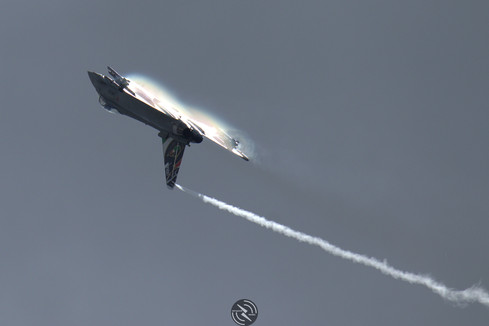















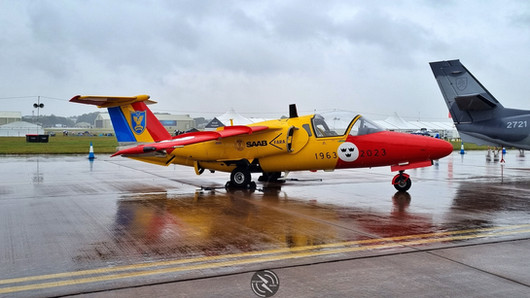























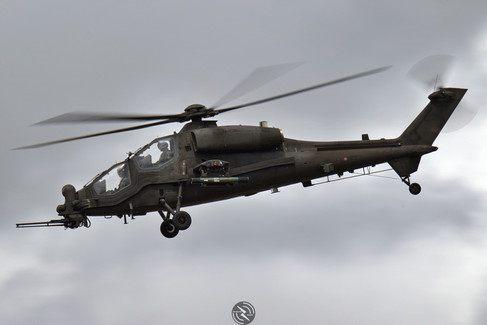









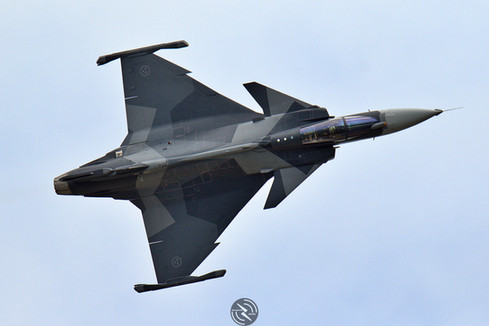





































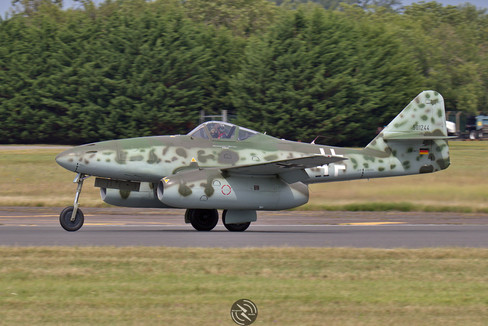

































































































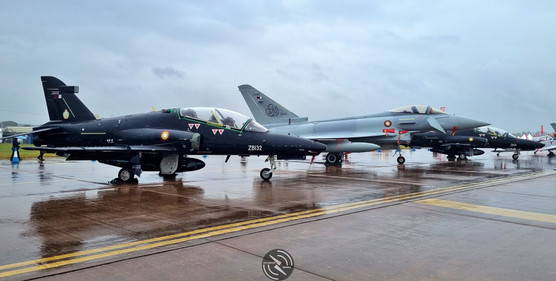















Comments